#chors deity
Text

ciebie którego pożerają wilcy
light on us with your blessings
you who is the Moon
we worship you
we thank you
for what you do
(since it's new moon today a small post for Chors)
#witchcraft#pagan#paganism#deity work#rodzimowiercza wiara#rodzimowierstwo#rodnovery#slavic witch#slavic pantheon#slavic gods#slavic mythology#slavic paganism#slavic polytheism#chors deity#chors god#khors deity#khors god#god of the moon
16 notes
·
View notes
Text
8 Most Famous Festivals in India
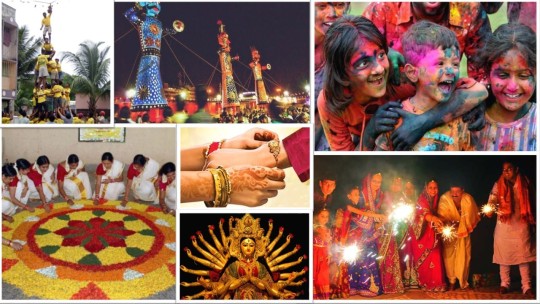
India is known for its multitude of festivals and the peaceful coexistence of people from different religious backgrounds. These festivals are a true representation of India's rich cultural heritage and traditions. There are several festivals and celebrations. While there are celebrations throughout the year, the country is at its most colorful from October to January. Every religion and community in India practice their own culture and enjoy it to the fullest. India celebrates holidays according to state, religion, and society. Festivals in India are never ending and every day is something to celebrate.
Diwali
The nation commemorates Lord Rama's homecoming to Ayodhya after a 14-year exile by lighting diyas, making rangolis, adorning homes, donning new garments, giving out presents, and setting off fireworks. People also revere Lord Ganesha, who represents moral beginnings, and Goddess Lakshmi, the Goddess of riches and prosperity. In West Bengal and Odisha, it is referred to as Kali Puja. It is known as Bandi Chor Diwas in Sikhism, and around this time, worshippers light the Golden Temple of Amritsar and enjoy fireworks displays. All around the nation, Diwali melas are organized. In Karnataka, there is a five-day celebration, which can be witnessed during India tours. In the Braj region, Diwali is devoted to Lord Krishna, and as a result, they worship Govardhan Mountain. There is a lot of fervor and spectacle around the Festival of Lights.
Republic Day
India became a republic on January 26, 1950, when the Indian Constitution went into effect. Since then, Indians have proudly celebrated the national holiday on January 26 each year. The festivities take the form of ceremonial marches at Rajpath in front of the Indian President and other foreign dignitaries. Numerous thousands of people come to the venue to watch the spectacle showcasing the nation's unity and cultural diversity. You need to register for this event from government websites during your India tour packages.
Holi
The festival of colors is the friendliest holiday in the nation. The night before Holi is Holika Dahan, when all negativity is burned in a bonfire. People play with organic colors while grooving to music on the main day. The festival's signature dishes include Gujiya, Mathri, and Thandai. In the Mathura district of Bhaj, Lathmar Holi is observed. Sticks were used by women to amusingly beat their husbands' shields. Offerings are made to Kamadeva, the Hindu god of love, throughout the south. In Gujarat's coastal city of Dwarka, the event is observed at the Dwarkadheesh Temple. It is celebrated as the holiday of reconciliation and fresh starts.
Rath Yatra, Puri, Orissa
The largest celebration observed in Puri is the Rath Yatra. In Puri's primary Jagannath temple, the deities Lord Jagannath, Lord Balabhadra, and Goddess Subhadra are carried away on the heavenly wheel and placed in their corresponding chariots. The chariots are then driven up to the Gundicha Temple's grand avenue. Participants in this Yatra number in the thousands. This Yatra is also shown live on foreign channels.
Krishna Janmashtami
The birth of Lord Krishna is commemorated each year by a Hindu event. The holiday is observed differently in each state. The traditional Krishna play, Rasa Lila, is performed throughout the states of Gujarat, Manipur, Assam, Rajasthan, and Mathura. The Dahi Handi festival is held in Mumbai, Pune, and Gujarat, during which groups construct human pyramids to reach a yogurt pot that is suspended at a specific height. In Gujarat, traditional dances are presented at the temples. Farmers in Gujarat's Kutch region paint bullock carriages with Krishna statues to perform pageants. People participate in devotional songs and celebrate the holiday in North East and South India, respectively. The most important Indian festivals are observed in Mathura, Vrindavan, and ISKCON.
Durga Pooja
The festival honors Goddess Durga's victory over Mahishasura and the triumph of good over evil. In the eastern and north-eastern states of India, it is celebrated over a period of ten days and is a significant social occasion. The believers take pleasure in the lengthy and intricate procedures. You are surrounded by colorful streets, pandals, bhajans, and dazzling lights throughout the festival season. Additionally, to commemorate Maa Durga's victory over the buffalo demon, actual animal sacrifices are made at the temples of West Bengal, Odisha, and Assam. In Karnataka, it is known as Mysore Dasara. The scheduled dates could change.
Rann Utsav, Kutch, Gujrat
Visitors are cordially welcomed in the White Desert. The celebration continues until February. The vibrant fairs at the river's edge enhance people's spirits with a festive spirit. There are activities like horseback riding, camel riding, bird watching, traditional dances, various games, giant chess, paramotoring, and net cricket, to name a few. The festivals in India offer guests an opportunity to get a taste of the many customs and friendliness of the Kutchi people. Everyone enjoys looking at white sand that has colorful ornaments.
Hornbill Festival, Nagaland
The Hornbill Festival, often known as the Festival of Festivals, takes place annually from December 1–7. a distinctive traditional event that takes place in Nagaland, a state in northeastern India. Nagaland is a multiethnic state that is home to various tribes. The state tourism and arts & culture agencies of Nagaland organize the Hornbill Festival to highlight the culture and ethnicity of the region and to promote interaction between various tribal tribes.
Conclusion
India's festivals are a vibrant tapestry of cultural diversity, reflecting the nation's rich heritage. From the dazzling lights of Diwali to the colors of Holi and the grandeur of Republic Day, these celebrations are a testament to India's unity in diversity. The Rath Yatra in Puri, Krishna Janmashtami's joyous festivities, and the grandeur of Durga Puja in the east showcase the country's deep-rooted traditions.
As you plan your journey through India, don't miss these opportunities to immerse yourself in the country's cultural tapestry. Each festival paints a unique picture of India's traditions, making your visit to places in India like Delhi, Kolkata, Mathura, and Nagaland an unforgettable experience.
3 notes
·
View notes
Text
Which Baby Krishna Idol is good to keep at your Home?

Bal Gopal, the child form of lord Krishna, is worshiped for his innocence especially, if you have children at home or are planning for one. A Baby Krishna Idol suits anyone who appreciates art and spirituality. These statues often depict the playful and innocent version of the Lord. Therefore, when selecting such statues for your home, the face of the idol is of primary importance- the statue should depict an endearing face. Baby Krishna Idols are available in different forms and poses. Let's look at the most important types of Baby Krishna Idols available so that you can make a better decision before purchasing.
Table of Content
IntroductionThe 10 most popular Baby Krishna Idols1) Laddu Gopal Idol2) Baby Krishna Idol with butter3) Oonjal Krishna Idol4) Aalila Krishna Idol5) Shankhu Krishna Statue6) Vasudev Carrying Baby Krishna Statue7) Pearl Krishna Statue8) Ganesha and Krishna statue9) Krishna and Kaaliya Naag10) Baby Krishna with Yashoda StatueConclusionsFrequently Asked QuestionsRelated Readings
The 10 most popular Baby Krishna Idols
youtube
1) Laddu Gopal Idol
Laddu Gopal is considered one of the most adorable sides of Baby Krishna and he appears with a sweet ball of Laddu in his hands. This deity is considered to be the form of abundance, delight and gracefulness played by Krishna. It is said that keeping a Laddu Gopal statue at home attracts wealth and happiness. This version of Baby Krishna is quite popular in Northern India, with both crawling, sitting and standing poses of the baby Krishna gaining popularity. Looking to add a little charm to your puja space? Check out this adorable Laddu Gopal Idol made in Kerala ! The Laddu Gopal statue not only enhances your home's décor but also invites the divine presence and blessings of Lord Krishna into your life.

"In the sweet hands of Laddu Gopal, we find the essence of divine joy and childlike wonder."
- Radhanath Swami
slide 5 to 7 of 3
BABY KRISHNA WITH BUTTER POT STATUE IN POLYMARBLE- 20 CM HEIGHT
₹1,500.00See Product
BABY KRISHNA WITH BUTTER IN HAND STATUE IN POLYMARBLE- 18 CM HEIGHT
₹1,250.00See Product
MAKHAN CHOR KRISHNA STATUE IN MARBLE DUST, POLY RESIN- 17 CM HEIGHT
₹1,500.00
₹1,000.00See Product
"If we want to be touched by the consciousness that we refer to as Krishna, we need Leela – the path of the playful."
Sadguru
2) Baby Krishna Idol with butter
Butter Krishna also known as Venna Krishnan in Kerala depicts the mischievous and butter-loving image of the deity as a divine child holding a bowl of butter. Quite similar to the Laddu Gopal version of the Lord, the major difference here is that the baby Krishna holds butter instead of Laddu. This type of Venna Krishnan is quite popular in the Southern parts of India. This statue symbolizes the playful nature and innocence of Krishna. It is believed that keeping a Venna Krishna statue at home brings in a light spirit of playing and joy thus reminding us to take life less seriously. Invite the joy of Butter Krishnainto your home with a beautiful Venna Krishna idol. Invite the joy and playfulness of childhood into your home with a beautiful Venna Krishna statue, a constant reminder to find the lighter side of life.
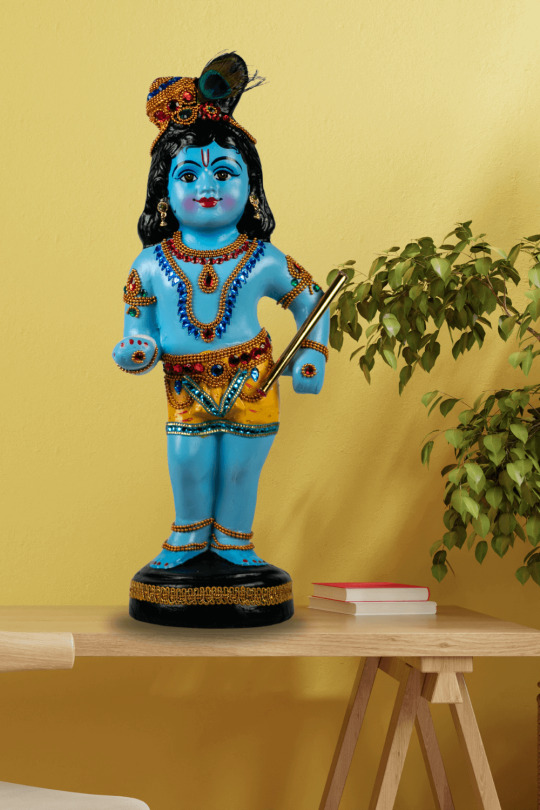
3) Oonjal Krishna Idol
Oonjal Krishna Idol portrays a little grown-up Krishna as he sits on a swing. The representation signifies the joyous and untroubled nature of Krisna’s early years. Myth says that one of Baby Krishna's favorite pastimes was swinging on a jhula made of ropes and wood. Today, a lot of statues replicating Lord Krishna's Swing are available. The soft movement of the swing and Krishna’s calm face is said to bring some calmness into your home. It is suitable for people looking for quietness and peacefulness in a room. This version of Baby Krishna on Swing is very much popular in Southern India. For those seeking a serene ambiance, the Oonjal Krishna Idol is the perfect addition to your home decor.
OONJAL KRISHNAN IDOL, BABY KRISHNA ON SWING STATUE - 72 CM HEIGHT
₹7,000.00See Product
"Swinging in divine joy, may Krishna's grace fill your home with peace and happiness."
Anonymous
4) Aalila Krishna Idol
Vatapatrasayi-Lord of the Banyan Leaf is a popular depiction of Baby Krishna which can be seen in Temple Paintings. This version of Lord Krishna is that of a baby on a banyan leaf, grabbing his lotus-like toe and placing it in his mouth. According to mythology, Sage Markandeya finds the baby krishna floating on a banyan leaf in raging waters of the sea. Aalila Krishnan idols are available in a variety of sizes. Adding Aalila Krishna Idol to your space is believed to invite a sense of calm and divine protection, perfect for meditation and quiet reflection.

"Cradled on a leaf, Aalila Krishna reminds us of the divine tranquility that resides in simplicity."
- Radhanath Swami
5 Shankhu Krishna Statue
The Shankhu Krishna Statue depicts baby Krishna sitting on Shankhu/conch. This symbolizes unspeakable auspiciousness. The Shankhu is considered the divine voice of the universe. Purity and spirituality mostly associate with the Shankhu Krishna statue. Keeping a Shankhu Krishna statue at home is said to call in vibrations of a very positive nature and great spiritual growth, hence ideal for prayer rooms or places of worship. Placing a Shankhu Krishna Statue in your home can enhance spiritual growth and fill your space with positive vibrations, making it an ideal addition to any prayer room or place of worship.

"Shankhu Krishna, resting on the conch, signifies the eternal sound of the universe and the purity of divine truth."
- Radhanath Swami
6) Vasudev Carrying Baby Krishna Statue
This Vasudev Carrying Baby Krishna Statue depicts the Strong and touching moment when Vasudev, father to Krishna, had to cross the river Yamuna, baby Krishna in his arms, to protect him from the wrath of King Kamsa. As such, this statue symbolizes protection, courage, and good reigning over evil. Having a Vasudev Carrying Baby Krishna Statue in your home serves as a powerful reminder of the protection and bravery that lies within us all, embodying the triumph of good over evil.

"In the embrace of Vasudev, Baby Krishna's journey reminds us of the boundless strength found in a father's love."
- Devdutt Pattanaik
7) Pearl Krishna Statue
According to Hindu mythology, it was Lord Krishna who discovered the first pearl from ocean. In Pearl Krishna statue, krishna is sitting in a beautiful pearl shell,representing purity, wisdom, and divine beauty. The use of pearls in these statues adds a touch of elegance and sophistication. Incorporating a Pearl Krishna statue into your home decor adds a touch of elegance and spiritual beauty, making it ideal for spaces where you wish to emphasize grace and sophistication.

"Encased in a pearl shell, Krishna embodies the timeless elegance and purity of the divine."
- Swami Sivananda
8) Ganesha and Krishna statue
Wondering what the relationship between Krishna and Ganesha is?? According to myths, Krishna(Lord Vishnu) is the maternal uncle of Ganesha. This statue of Baby Krishna with Baby Ganesha brings out the playful and divine aspects of both gods within one piece. Similar idol with baby Krishna sitting on Ganesha can be found in the famous Malliyoor Ganesha Temple in Kerala. This form combines joy, wisdom, and auspiciousness in its manifestation from both Krishna and Ganesha. It's simply nice to have at any home, providing harmony and positive energy. Having a Ganesha and Krishna statue in your home brings harmony and positive energy, showcasing the divine joy and wisdom of both deities.
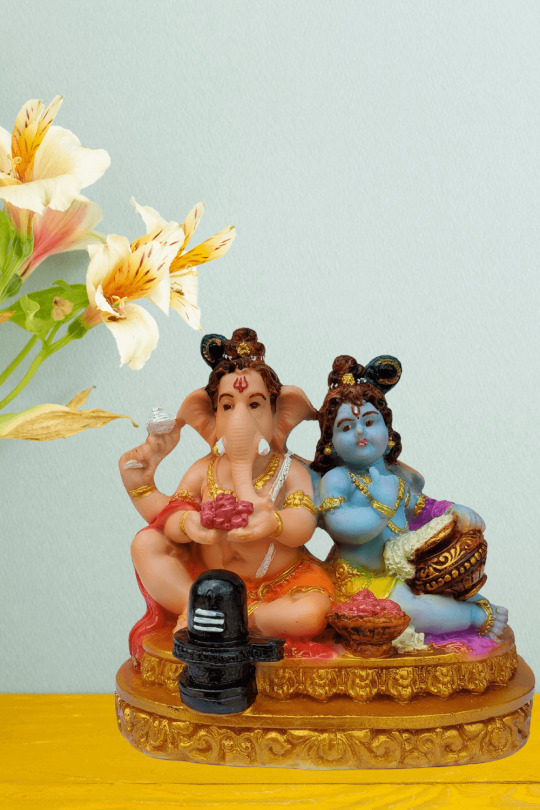
"Where Krishna's playful spirit meets Ganesha's wisdom, harmony and joy flourish."
- Radhanath Swami
slide 5 to 7 of 3
LADOO GOPAL IDOL, BABY KRISHNA, VENNA KRISHNA IDOL IN FIBRE- 46 cm HEIGHT
₹2,200.00See Product
CRAWLING BABY KRISHNA IDOL IN FIBRE, BAL KRISHNA STATUE- 28 CM
₹1,450.00See Product
SREE KRISHNA STATUE IN FIBRE- 35 CM HEIGHT
₹1,100.00See Product
9) Krishna and Kaaliya Naag
It portrays a legendary episode when Krishna danced on the hood of the serpent Kaaliya, manifesting his divine powers and inculcating bravery. It is a symbol of good's victory over evil and protection of the innocents. Having a Krishna and Kaaliya Naag statue at home serves as a reminder of the inner strength and resilience inside all of us. Having a Krishna and Kaaliya Naag statue at home serves as a powerful reminder of the inner strength and resilience within us all, symbolizing the victory of good over evil and the protection of the innocent.

"On the hood of Kaaliya, Krishna dances, symbolizing the triumph of divine power over adversity." -
Swami Sivananda
10) Baby Krishna with Yashoda Statue
Baby Krishna with Yashoda Statue captures the loving bond between Baby Krishna and Yashoda. It symbolizes maternal love, care, and the nurturing aspect of life. Placing a statue of Baby Krishna with Yashoda in your home can evoke feelings of warmth and compassion, making it perfect for family spaces. Adding a Baby Krishna with Yashoda Statue to your home evokes warmth and compassion, making it an ideal addition to any family space.

"In the loving embrace of Yashoda, Baby Krishna shines as the embodiment of maternal devotion and divine tenderness."
- Devdutt Pattanaik
Conclusion
A Baby Krishna statue at home not only enhances the décor of the place but also invites divine blessings and positive energy into your living space. Each and every avatar of Baby Krishna has its own significance and can add to your house's spiritual ambiance. Be it the playful Laddu Gopal, serene Aalila Krishna, or powerful Krishna and Kaaliya Naag, these statues can transform any house into a peaceful, loving abode that exudes divine grace. We hope that you have figured out which baby Krishna idol is suitable for your home.
Explore the enchanting collection of Baby Krishna statues at Arte House to bring divine grace and positivity into your home.
#BabyKrishna#KrishnaIdol#DivineDecor#SpiritualArt#KrishnaStatue#HomeTemple#ArteHouse#DivineGrace#PujaRoom#Spirituality#KrishnaDevotion#HomeDecor#BlessedHome#KrishnaLove#CulturalHeritage#Youtube
0 notes
Quote
Krishna idols is a major deity in Hinduism and is widely revered as the eighth avatar of Lord Vishnu. He is known for his divine plays, teachings, and his role as a guide and friend to his devotees. The depiction of Krishna idols in statues and sculptures varies across different regions and artistic traditions. However, there are some common elements and characteristics that can be found in many Krishna idols.
Form: Krishna idols is often depicted as a young and playful boy or as a youthful, charming prince. He is portrayed with a well-built and attractive body, often with a bluish complexion. Sometimes, he is depicted as a cowherd with a flute in his hand.
Clothing and Ornaments: Krishna is usually depicted wearing traditional Indian attire, such as a dhoti (a cloth wrapped around the waist) and sometimes a turban or a crown. He is adorned with various ornaments, including necklaces, bracelets, and earrings.
Poses: Krishna idols can be found in various poses, each with its own significance. Some popular poses include:
Flute Playing (Venugopal): Krishna playing the flute, symbolizing divine harmony and enchanting music.
Butter Thief (Makhan Chor): Krishna stealing butter from pots, reflecting his mischievous nature.
Lifting Govardhan Hill (Govardhan Dhari): Krishna lifting the Govardhan Hill on his finger, representing his protection and care for his devotees.
Dancing (Nritya Krishna): Krishna in a dancing pose, known as the "cosmic dance" or the "dance of creation."
0 notes
Text
The Apocryphal Tomb: Where great gods go to die
When a particularly powerful deity is killed - whether it be through exsanguination, dismemberment, irrelevance, or devouring - they are reduced to either ichor - which may be fed upon by other beings - fossilized into ambrochor - which will later separate into ambrosia/ambrosteel and chorum - or they become a disembodied, single minded, being known as a chor wisp. Chor wisps - more commonly known as will o' wisps - tend to be meddlesome and vindictive, often using lesser beings to gain power or as hosts to possess, and due to their destructive nature are caught and kept within the Apocryphal Tomb. The Tomb contains and subdues the wisps, leaving them powerless, it resides deep beneath the temples of Pantheon Peak. The capture and containment of chor wisps is entrusted to greater deities, most commonly the current chief of the divine and the Reaper.
1 note
·
View note
Photo

#Quran #DailyHadithSMS #Hadith #Islam سورة التوبة ٣١ اِتَّخَذُوۡۤا اَحۡبَارَہُمۡ وَ رُہۡبَانَہُمۡ اَرۡبَابًا مِّنۡ دُوۡنِ اللّٰہِ وَ الۡمَسِیۡحَ ابۡنَ مَرۡیَمَ ۚ وَ مَاۤ اُمِرُوۡۤا اِلَّا لِیَعۡبُدُوۡۤا اِلٰـہًا وَّاحِدًا ۚ لَاۤ اِلٰہَ اِلَّا ہُوَ ؕ سُبۡحٰنَہٗ عَمَّا یُشۡرِکُوۡنَ. They have taken their scholars and monks as lords besides Allah , and [also] the Messiah, the son of Mary. And they were not commanded except to worship one God; there is no deity except Him. Exalted is He above whatever they associate with Him. [9. Surah At-Tawbah: 31] سورة التوبة 31 ان لوگوں نے اللہ کو چھوڑ کر اپنے ��الموں اور درو��شوں کو رب بنایا ہے اور مریم کے بیٹے مسیح کو حالانکہ انہیں صرف ایک اکیلے اللہ ہی کی عبادت کا حکم دیا گیا تھا جس کے سوا کوئی معبود نہیں وہ پاک ہے ان کے شریک مقرر کرنے سے ۔ Surah At-Tawbah: 31 Un logon ny ALLAH ko chor ker apny aalimon aur darweshon ko Rab banaya hai aur Maryam k betay maseeh ko, halan k unhain sirf aik akaily ALLAH hi ki ebadat ka hukam dia gaya tha jis k siwa koi mabood nahi, Wo paak hai un k shareek muqarrar kerny sy. https://www.instagram.com/p/Cn0hhMGIv5G/?igshid=NGJjMDIxMWI=
0 notes
Text
My Gods are what is keeping me alive right now. I'm so happy and grateful for them.
#witchblr#pagan#paganart#slavic#deity work#veles#Weles#Chors#hors#Cernunnos#witchcraft#paganism#rodzimowierstwo#rodnovery#pogaństwo
22 notes
·
View notes
Text
Russian Fairy Tales Test Prep: Pagan Deities
The best known roster of pagan deities is that of the six whose statues Prince Vladimir erected upon assuming sole rule of Kiev. According to the Primary Chronicle for the year 980, he “placed idols on a hill, outside the palace yard, a wooden Perun with a silver head and a golden mustache, and Khors and Dazhbog and Stribog and Simargl and Mokosh.” Missing from this list is Volos/Veles, the god of cattle (skotnii bog) and commerce, whose veneration in ancient Rus’ is widely attested, and by whose name (along with that of Perun) ancient Russians ratified oaths.

A. Perun/Bog
1. equivalent to: Lithuanian Perkunas, Latvian Perkons, Albanian Perendi, Roman Jupiter, Greek Zeus, Hittite Teshub, Norse Thor/Donar, Celtic Taranis.
2. primary sources: Nestor’s Chronicle, mid-6th century Procopius, 10th-century Varangian treaties
3. primary story: a creation myth, in which he battles Veles, the Slavic god of the underworld, for the protection of his wife (Mokosh, goddess of summer) and the freedom of atmospheric water, as well as for the control of the universe.
4. dvoeverie: After Christianization in the 11th century CE, Perun's cult became associated with St. Elias (Elijah), also known as the Holy Prophet Ilie (or Ilija Muromets or Ilja Gromovik), who is said to have ridden madly with a chariot of fire across the sky, and punished his enemies with lightning bolts.
In Slavic mythology: Perun was the supreme god of the pre-Christian Slavic pantheon, although there is evidence that he supplanted Svarog (the god of the sun) as the leader at some point in history. Perun was a pagan warrior of heaven and patron protector of warriors. As the liberator of atmospheric water (through his creation tale battle with the dragon Veles), he was worshipped as a god of agriculture, and bulls and a few humans were sacrificed to him. In 988, the leader of the Kievan Rus' Vladimir I pulled down Perun's statue near Kyiv (Ukraine) and it was cast into the waters of the Dneiper River. As recently as 1950, people would cast gold coins in the Dneiper to honor Perun.
Appearance & Reputation: Perun is portrayed as a vigorous, red-bearded man with an imposing stature, with silver hair and a golden mustache. He carries a hammer, a war ax, and/or a bow with which he shoots bolts of lightning. He is associated with oxen and represented by a sacred tree—a mighty oak. He is sometimes illustrated as riding through the sky in a chariot drawn by a goat. In illustrations of his primary myth, he is sometimes pictured as an eagle sitting in the top branches of the tree, with his enemy and battle rival Veles the dragon curled around its roots.
Perun is associated with Thursday—the Slavic word for Thursday "Perendan" means "Perun's Day"—and his festival date was June 21.
Reports: The earliest reference to Perun is in the works of the Byzantine scholar Procopius (500–565 CE), who noted that the Slavs worshipped the "Maker of Lightning" as the lord over everything and the god to whom cattle and other victims were sacrificed.
Perun appears in several surviving Varangian (Rus) treaties beginning in 907 CE. In 945, a treaty between the Rus' leader Prince Igor (consort of Princess Olga) and the Byzantine emperor Constantine VII included a reference to Igor's men (the unbaptized ones) laying down their weapons, shields, and gold ornaments and taking an oath at a statue of Perun—the baptized ones worshipped at the nearby church of St. Elias. The Chronicle of Novgorod (compiled 1016–1471) reports that when the Perun shrine in that city was attacked, there was a serious uprising of the people, all suggesting that the myth had some long-term substance.
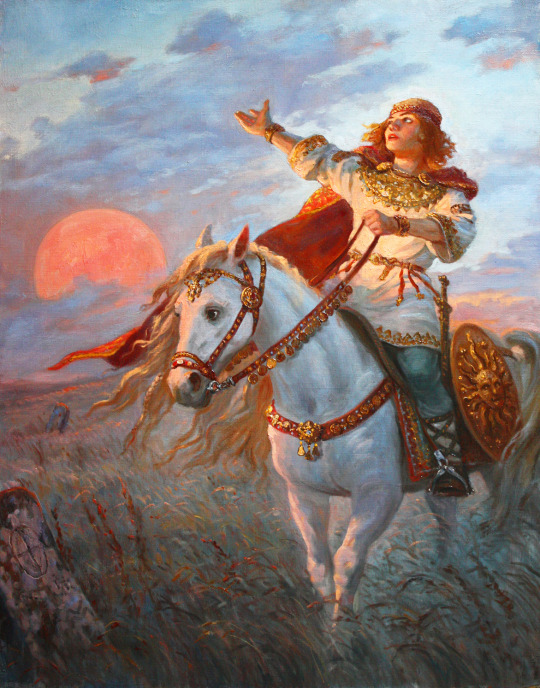
B. Kors/Xors/Chors
- most frequently mentioned Slavic god, after Perun
- dvoeverie: appears in the apocryphal work Sermon and Apocalypse of the Holy Apostles, which mentions Perun and Khors as old men; Khors is said to live in Cyprus. Khors also appears in the apocryphal text Conversation of the Three Saints, a text which combines Slavic + Christian + Bogomil traditions. In it, he is referred to as “an angel of thunder” and it is said that he is Jewish.
- his functions are uncertain and there are multiple interpretations of his name.
1. Sun God hypothesis: associated with Dazhbog; in The Tale of Igor’s Campaign, Prince Vseslav, who “came to Tmutarakani before the cocks" and "Khors ran his way", traveled from west to east and thus reached the castle before the cocks crowed, and in this way "overtook" the Sun; his name means “rays.”
2. Moon God hypothesis: Prince Vseslav was called “wolf” and his journey takes place at night when the sun is absent from the sky; his name does mean “rays” but they’re the moon’s rays and not the sun’s rays.
3. Fertility God/Vegetation hypothesis: link between Thracian & early Slavic cultures indicates Kors is more of a Dionysus-type figure, who dies and is risen; like Dionysus, Dazhbog (who Kors is often linked to) has a double nature (Eastern Slavs assign him solar qualities, while Southern Slavs assign him chthonic qualities).
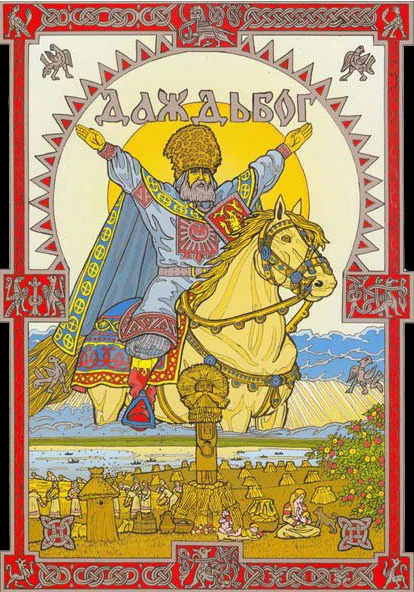
C. Dazhbog
1. equivalent to: Khors (Russian/Iranian), Mithra (Persian), Helios (Greek), Lucifer (Christian)
2. primary sources: John Malalas, The Song of Igor’s Campaign
3. family: Son of Svarog, brother of fire god Svarozhich, husband of Mesyats (the moon), father of the Zoryi and Zvezdy
4. primary myth: He resided in the east, in a land of everlasting summer and plenty, in a palace made of gold. The morning and evening auroras, known collectively as Zorya, were his daughters. In the morning, Zorya opened the palace gates to allow Dazbog to leave the palace and begin his daily journey across the sky; in the evening, Zorya closed the gates after the sun returned in the evening.
5. dvoeverie: There was a belief that each winter he would enter people's homes and gift gold to those who had been good. That belief passed into Christianity, especially in Serbia, and this visitor was called Položajnik. During Christianisation, his cult was exchanged with the cult of Saint Sava, while Dažbog became lame Daba - the most powerful demon in Hell. Reasons why he was demonized are various, possibly because his cult was the strongest in Serbia or because he was considered also as the god of Nav, the Slavic underworld and world of the dead.
In Slavic mythology: Dazbog was the Slavic sun god, a role that is common to many Indo-European people, and there is ample evidence that there was a sun cult in the pre-Christian tribes of central Europe. His name means "day god" or "giving god," to different scholars—"Bog" is generally accepted to mean "god," but Daz means either "day" or "giving."
His totem animal was a wolf, therefore wolves were sacred animals and killing them was considered a great sin. Wolves were considered to be messengers of Dazhbog, while he himself could shift into a white wolf.
According to one myth, Svarog became tired of reigning over the universe and passed on his power to his sons, Dazhbog and Svarogich.
Appearance & Reputation: Dazbog is said to ride across the sky in a golden chariot drawn by fire-breathing horses who are white, gold, silver, or diamonds. In some tales, the horses are beautiful and white with golden wings, and sunlight comes from the solar fire shield Dazbog always carries with him. At night, Dazbog wanders the sky from east to west, crossing the great ocean with a boat pulled by geese, wild ducks, and swans.
In some tales, Dazbog starts out in the morning as a young, strong man but by the evening he is a red-faced, bloated elderly gentleman; he is reborn every morning. He represents fertility, male power, and in "The Song of Igor's Campaign" he is mentioned as the grandfather of the Slavs.
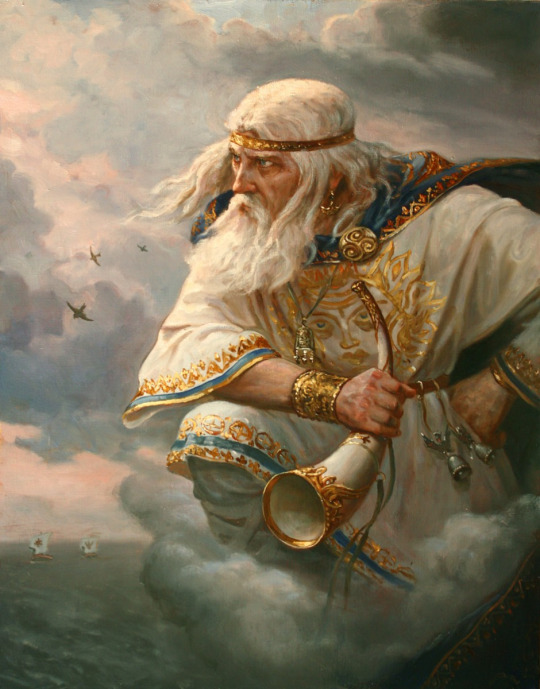
4. Stribog
Very little is known about him, although he was clearly very important to early Slavic peoples. In the epic ”Slovo o polku Igorove “ it is said that the winds, the grandsons of Stribog, blow from the sea. This leads to conclusion that Stribog is imagined as an old person, since he has grandsons. The grandsons were the winds from all directions.
Eagle was the animal consecrated to Stribog. Plants consecrated to Stribog were hawthorn and oak. When pledges were made, Stribog was often warrantor. Festivities in Stribog’s honor were organized in the summer as well as in the winter. They were probably organized in the summer in order to invocate winds and rain, while in the winter they were organized in order to appease him. In the period of Christianization Stribog’s characteristics were overtaken by St. Bartholomew and Stevan vetroviti (windy).
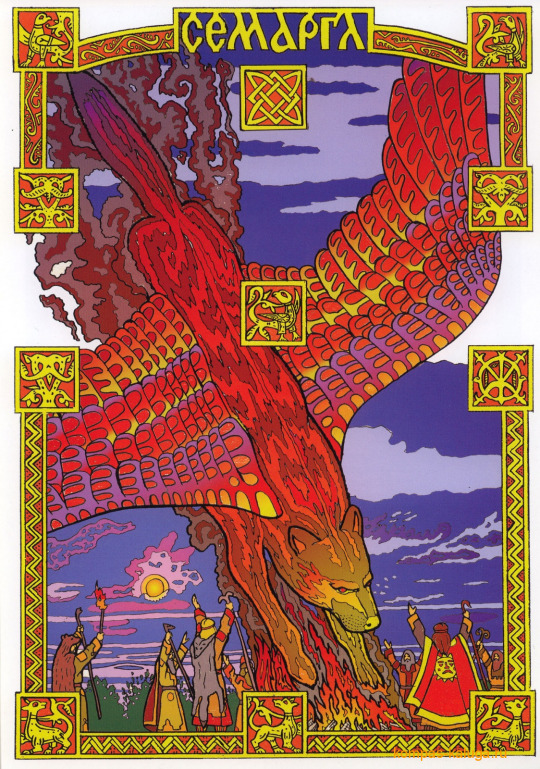
5. Simargl/Semargl
- may be equivalent to Simurgh in Persian mythology, who is portrayed similarly (winged lion and/or dog). He can also take human form.
- God of physical fire (as opposed to celestial fire; that’s Svarog)
- He is said to be the husband of Kupalnica (or Kupalnitsa), goddess of night, from whom he got two children: Kupalo and Kostroma.
Zorya, solar goddesses who are servants or daughters of the deity Dazhbog, keep Simargl chained to the star Polaris in the constellation Ursa Minor. Should he break free and destroy this constellation, it will cause the world to end.
Why would he be worshipped in Rus’, you ask? A couple of possible answers:
a. Eastern Slavs borrowed Simargl from Sarmatian-Alanian people and worshiped him.
b. Eastern Slavs never worshiped Simargl. Just at that time, a significant number of Kiev residents were of Khazar and Sarmatian-Alanian origin. Vladimir included their deity in the pantheon to get their support.

6. Volos/Veles (also Vlas, Weles Vlasii, St. Blaise, or Blasius)
1. equivalent to: Velinas (Baltic), Varuna (Vedic), Hermes (Greek), Odin (Norse)
2. primary sources: The Tale of Igor’s Campaign, old Russian chronicles
3. primary myth: a creation myth, in which Veles abducts Mokosh (the Goddess of Summer and consort of Perun, God of Thunder). Perun and his enemy battle for the universe under a huge oak, Perun's holy tree, similar to both Greek and Norse (Yggdrasil) mythologies. The battle is won by Perun, and afterward, the waters of the world are set free and flowing.
4. dvoeverie: Velia remains a feast of the dead in old Lithuanian, celebrating the border between the world of the living and the world of the dead, with Veles operating as a role of guiding souls to the underworld. The battle between Perun (Ilija Muromets or St. Elias) and Veles (Selevkiy) is found in many different forms, but in later stories, instead of gods, they are complementary figures separated from one another by a furrow plowed by Christ, who converts them. Veles is also likely represented by St. Vlasii, depicted in Russian iconography as surrounded by sheep, cows, and goats.
In Slavic mythology: A second creation myth associated with Veles is the formation of the boundary between the underworld and the human world, a result of a treaty forged between Veles and a shepherd/magician.
In the treaty, the unnamed shepherd pledges to sacrifice his best cow to Veles and keep many prohibitions. Then he divides the human world from the wild underworld led by Veles, which is either a furrow plowed by Veles himself or a groove across the road carved by the shepherd with a knife which the evil powers cannot cross.
Veles is associated with a wide variety of powers and protectors: he is associated with poetry and wisdom, the lord of the waters (oceans, seas, ships, and whirlpools). He is both the hunter and protector of cattle and the lord of the underworld, a reflection of the Indo-European concept of the netherworld as a pasture. He is also related to an ancient Slavic cult of the deceased soul; the ancient Lithuanian term "welis" means "dead" and "welci" means "dead souls."
Appearance & Reputation: Veles is generally portrayed as a bald human man, sometimes with bull horns on his head. In the epic creation battle between Velos and Perun, however, Veles is a serpent or dragon lying in a nest of black wool or on a black fleece beneath the World Tree; some scholars have suggested he was a shape-shifter. In addition to domestic horses, cows, goats, and sheep, Veles is associated with wolves, reptiles, and black birds (ravens and crows).
Reports: The earliest reference to Veles is in the Rus-Byzantine Treaty of 971, in which the signers must swear by Veles' name. Violators of the treaty are warned of a menacing punishment: they will be killed by their own weapons and become "yellow as gold," which some scholars have interpreted as "cursed with a disease." If so, that would imply a connection to the Vedic god Varuna, also a cattle god who could send diseases to punish miscreants.

7. Mokosh
1. loosely comparable to: Gaia, Hera (Greek), Juno (Roman), Astarte (Semitic)
2. epithets: Goddess Who Spins Wool, Mother Moist Earth, Flax Woman
3. primary sources: Nestor Chronicle (a.k.a. Primary Chronicle), Christian-recorded Slavic tales
4. dvoeverie: With the coming of Christianity into the Slavic countries in the 11th century CE, Mokosh was converted to a saint, St. Paraskeva Pyanitsa (or possibly the Virgin Mary), who is sometimes defined as the personification of the day of Christ's crucifixion, and others a Christian martyr. Described as tall and thin with loose hair, St. Paraskeva Pyanitsa is known as "l'nianisa" (flax woman), connecting her to spinning. She is the patroness of merchants and traders and marriage, and she defends her followers from a range of diseases.
In Slavic mythology: The origins of Mokosh as mother earth may date to pre-Indo-European times (Cuceteni or Tripolye culture, 6th–5th millennia BCE) when a near-global woman-centered religion is thought to have been in place. Some scholars suggest she may be a version of Finno-Ugric sun goddess Jumala.
Mokosh, sometimes transliterated as Mokoš and meaning "Friday," is Moist Mother Earth and thus the most important (or sometimes only) goddess in the religion. As a creator, she is said to have been discovered sleeping in a cave by a flowering spring by the spring god Jarilo, with whom she created the fruits of the earth. She is also the protector of spinning, tending sheep, and wool, patron of merchants and fishermen, who protects cattle from plague and people from drought, disease, drowning, and unclean spirits.
Although the Great Goddess has a variety of consorts, both human and animal, in her role as a primary Slavic goddess, Mokosh is the moist earth goddess and is set against (and married to) Perun as the dry sky god. Some Slavic peasants felt it was wrong to spit on the earth or beat it. During the Spring, practitioners considered the earth pregnant: before March 25 ("Lady Day"), they would neither construct a building or a fence, drive a stake into the ground or sow seed. When peasant women gathered herbs they first lay prone and prayed to Mother Earth to bless any medicinal herbs.
Appearance & Reputation: Surviving images of Mokosh are rare—although there were stone monuments to her beginning at least as long ago as the 7th century. A wooden cult figure in a wooded area in the Czech Republic is said to be a figure of her. Historical references say she had a large head and long arms, a reference to her connection with spiders and spinning. Symbols associated with her include spindles and cloth, the rhombus (a nearly global reference to women's genitals for at least 20,000 years), and the Sacred Tree or Pillar.There are many goddesses in the various Indo-European pantheons who reference spiders and spinning. Historian Mary Kilbourne Matossian has pointed out that the Latin word for tissue "textere" means "to weave," and in several derivative languages such as Old French, "tissue" means "something woven." The act of spinning, suggests Matossian, is to create body tissue. The umbilical cord is the thread of life, transmitting moisture from the mother to the infant, twisted and coiled like the thread around a spindle. The final cloth of life is represented by the shroud or "winding sheet," wrapped around a corpse in a spiral, as thread loops around a spindle.
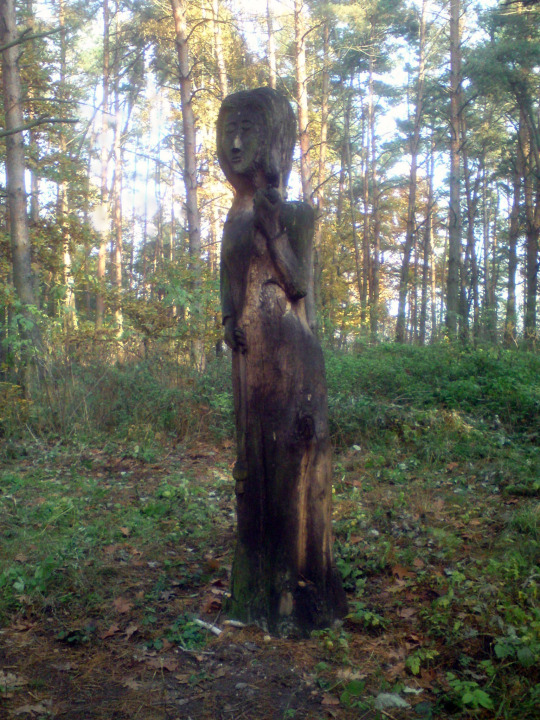
Our brief survey of agrarian holidays indicates that the peasant’s central concern is fertility and that special rites in the cemetery and/or rites involving a symbolic death & resurrection are a major component in these celebrations.
Belief in the absolute sanctity of “Mother Damp Earth” (Mat’syra zemlia) has been central to folk belief throughout the centuries. In remote areas, old people observed a ritual of asking the earth’s forgiveness prior to death into the 20th century. A number of scholars have maintained that peasants transferred attributes of earth worship to their particular veneration of Mary as “Mother of God.”
Fedotov: “At every step in studying Russian popular religion, one meets the constant longing for a great divine female power, be it embodied in the image of Mary or someone else. Is it too daring to hypothesize, on the basis of this religious propensity, the scattered elements of the cult of a Great Goddess who once...reigned upon the immense Russian plains?”
#Russian fairy tales#study blog#my notes#Slavic deities#slavic mythology#Russian paganism#russian folk belief
121 notes
·
View notes
Text



Day 14: adrift. A chillaxin’ jellyfish minding her own business just floating about though the ocean.
Day 15: rescued. A mermaid that uses her hair to fish out silly and unprepared humans who have been overturned or shipwrecked on the daily. It’s just become a daily chor to her now, so she can be sometimes... unceremoniously rough...
Day 16: deity. Just a cool decked out mermaid deity of.. well shellfish? Or something like that?? I honestly just have a lot of fun coloring her🙌🙌
#drawing#sloppybrush#watercolor#art#painting#ink#illustration#doodle#nature#mermay2020#mermay#mermaid#underwater#sea#rescued#adrift#deity#goddess#shellfish#seashells#stainedglass#copics#jellyfish
11 notes
·
View notes
Text
NEW ABOUT ME:
-I'm genderfluid and audhd, borderline too (undiagnosed because the system sucks) and diagnosed schizophrenic
-godspoused! if you're anti fuck off
-I'm an age regressor but i curse a lot on this blog so age regressors feel free to follow my agere side blog @there-are-sharks-in-my-milk
-i don't discriminate anyone this is a safe space for minorities, poc, microlabels, systems, lgbt people, therians, everyone who is not a hateful jerk
-this blog is a mix of me posting about my deities, stray kids and other stuff i find interesting
-sometimes i vent make sure you're okay with it
blog rules are:
-if my practice looks different than yours and you don't like it you're free to unfollow
-if my vents annoy you and you feel the urge to tell me its my fault you're free to unfollow this is my shadow work free from censor space
-if you feel the need to tell me i seem psychotic you're free to fuck off
-don't fuckin curse me??? some of yall are not behaving and it's pissing me off
-other than that be kind and respectful to me and my friends
to interact with my blog make sure that you aren't:
racist, homophobic, terf, pedo, ableist, anti agere, a nsfw blog (it makes me uncomfortable), generally a hateful human
now the best part:
worshipping:
-Sekhmet
-Holy Mary
-Baba Jaga
-Medusa
-Kali
-Lilith
working with:
Marzanna, Apollo, Dionysus, Hecate, Persephone, Asclepius, Hel, Anat, Death, Satan, Leszy, Cernunnos, Horned God, Helios, Venus, Freyja, Asmodeus, Baphomet archangel Jophiel, Thoth, Fenrir, Dantalion, Buer, Beelzebub, Mut, Bes, Bacchus, Kogkipr (an unknown deity), Proserpina, Cnabetius Mars, Tegid Foel, angel Sariel, Hermanubis, Amun, Deimos and Phobos, Kvasir, Wepwawet, The Dagda, Swarożyc, Lucifer, Begotho (unknown deity), Aphrodite Areia, Stracchus (unknown deity), Ruadan, Somnia, Kek, Cerberus, Hestia, Nyx, Cerridwen, the Morrigan, Parvati, Shiva, Krishna, Vishnu, RadhaRani, Lakshmi, archangel Gabriel, archangel Azrael, Nakir and Munkar, archangel Michael, archangel Israphil, Kiram and Katibun, Somnus, Loki, Mokosz, Allah, Brigid, Hermes, Shakti, Anubis, Weles, Baldur, Khnum, Poseidon, Amphitrite, Astaroth, Neith, Wenut, Ganesha, Perun, Khepri, Inanna, Dola/Niedola, Ariadne, Jaryło, Chors, Sleipnir, Zorza, Jormungandr, Odin, Czarnobóg, Blodeuwedd, Set, Mafdet, Idunn, Seshat, Dziewanna, Artemis, Arioch, Eros, Vesna, Selene, Luna, Leviathan, Behemoth, Nox, Mammon, Abaddon, Azazel, Kathos, Vesta, Sun, Moon, Minerva, Athena, Eosphorus, Stolas
spirits that i work with:
-Pahiri (a white dragon spirit)
-Nkfofa (the mermaid spirit guide)
-a fae
-Fienon (a rusałka)
-Mo Xasii (familiar nr 1)
-Hilkog (spirit guide)
-Kalina (a harpy)
-Zanota (a mermaid spirit guide nr 2)
-Gawoż (hydra, familiar nr 2)
- Kiityk (upiór spirit guide)
-Xyo (a red fire dragon)
-Bemamo (a dragon shark)
devoting to:
-King Hades
-Bastet
-Aphrodite
I'm not really a hellenic polytheist, nor a kemetic one, not really a slavic one as well although i am hyperfixated on slavic paganism, yes, and i do wanna work with more slavic deities in the future but I don't label myself as anything I'm just a witch and a pagan i celebrate the slavic holidays and my deities holidays because they're the closest to me. if i were to label myself i would use "rodzimowierca"? but I'm just a witch, and well apparently a medium now too so 😀 fun uhh
i do free readings too! 5 a day to not burn out so quick but i wanna get more skilled since divination is my favourite skill to get one just dm me tp ask if im open!
I'm planning to master:
-cartomancy
-herbology
-moon magic
-blood magic
-protection
-palmistry
-a crystal ball
-reading more books...
-my fuckin research motivation...
i can do:
-tarot
-clairvoyance
-clairaudience
-spells and shit
-rituals
-sigils
-tea blends i guess
-motanki
-scrying
-oracle
-runes (both nordic and witch's runes)
sława! :]
50 notes
·
View notes
Text
Fiction: Nona Annabelle by Peter Soh

Image by T RR from Unsplash
This is a catastrophe. I must be dreaming. Wake up, Annabelle. Only when you wake up will you realise this is just a dream.
But they are still here. Pairs of black eyes are looking at me, no matter how many times I close and open my eyes. I can’t recognise any of them. They are not my family members and they definitely can’t be the servants in the house! He must have eaten a lion’s heart to simply enter a nona’s room! So, who are all these men? And the ladies here?
“Who is this girl? She looks like she has no idea where she is. I love mindless girls!” a boy smirks.
“Shut up, Andrew Zach,” the girls growl in unison.
“No girls will like an arrogant guy,” a girl with a ponytail echoes.
The boy scoffs. “Well, I can prove you wrong. Mr Ian always says no one carries the skinhead as good as I do. I don’t blame you girls. You girls have no taste.”
The man is Andrew Zach. His name resembles my cousin’s husband’s, Marvin Zach Pereira, who is a Portuguese.
Wait a minute. Am I in Portugal now?
This Andrew Zach indeed looks like a Portuguese. He has a natural tan on his face, neck, and arms – the one that is completely different from other men where their face and neck and arms are covered with different shades of brown. He has a pair of deep eyes and together with his almost-bald head, his piercing eyes make him a forbidding figure.
“Siapa kamu semua?” I ask faintly.
“She speaks Malay. I fail my Malay,” the girl with a ponytail turns to someone.
“I am not good in Malay too,” Andrew Zach seconds the girl. “Kah Heng, you go and ask the girl who is she instead. You come from the government school and your Malay is better than us.”
Everyone looks into the direction of a boy with small eyes. He shakes his head.
“I don’t want,” he splutters his refusal.
“What do you mean by ‘I don’t want’? Find out where she comes from before Mr Ian comes in.” Andrew Zach is rather loud.
The boy with the name of Kah Heng walks towards me. I retract my legs and redirect my gaze to the floor. I feel so uneasy – I have never come across a man face-to-face before. Except Father.
“Hi,” Kah Heng greets softly.
I avoid his gaze and continue to look at the carpeted floor.
What is ‘hi’?
Wait a minute. Did he mean ‘hoi’? I have heard of this Dutch greeting when Father held meetings with the Dutch in our home. Let’s just try.
“Hoi,” I mutter.
“She is weird,” Andrew Zach interrupts.
“Shut up, Andrew. Let Kah Heng do his job first,” the girl with a ponytail speaks again. This time she looks annoyed.
“All right, Isabelle the class monitor,” Andrew Zach jeers.
Isabelle? Is her name Isabelle? I think that’s a name because my name is Annabelle.
“Apakah nama kamu?” Kah Heng continues.
Did I hear it wrong? He speaks Malay?
“Lu tau cakap bahasa? Gua Annabelle! Kenapa gua kat sini? Ini tempat mana eh? Lu orang siapa?” I cough out all the questions I have in my mind.
“Kami pun tak tau kenapa you kat sini. You kat sini sudah bila kami semua balik ke kelas.”
“Kelas?”
I am in a class? I have never been to a school and I am forbidden from doing so.
“Mana tempat ni?” I try to probe further of my whereabout.
“Quincey International School,”
I can’t understand the language. “Apa?”
“Ni sekolah antarabangsa. You pelajar baru?”
“Pelajar?”
I look at the surroundings. There are many tables and chairs. Underneath those tables are cascades of papers and books. Two white boards are fixed behind me and there are many bright long tubes on the ceiling. The room is extremely cold and everyone looks bewildered.
#
I sit at a metal table not knowing why am I here. All I can remember is I uncoiled my long hair and washed my feet before I went to bed. I am very sure I washed my feet before bed because this has been a practice in my household for generations. It is said to prevent sleepers from having nightmares.
But why am I in a school now? Am I dreaming, still?
Many people are queueing up for food. I have no idea why they have to queue in such a manner – people are distancing themselves from one another for about three feet. They all look scruffy and depressed; the men have long hair and moustaches and their white shirts are full of creases and stains. The ladies have bags under their swollen and bleary eyes and most of them let their hair down like homeless people. And that’s not the worst.
I can’t bear to look at the ladies who are all in short skirts. It is despicable to even create such a dress in the first place, not to mention putting it on. Tak seronoh langsung. A self-respected and dignified nona will never make themselves seen by others, least of all to expose such immodest amount of legs to the public!
I am never allowed to make myself seen. Even my existence in the house is highly guarded and I can never cross to the thia besar where guests and visitors will be seated. The furthest I can venture out without company is the thia gelap. I used to peek through the gilded screen door in the second hall to catch a glimpse of the Dutch businessmen but it wasn’t long for me to have to stay at the quarter end of the household to learn about my jobs.
Mother never lauds me for keeping the thia abu immaculate nor pressing her favourite maroon kain chelay smooth. She often reminds me the laurels of my highest acclaim will be the day when she receives nasi lemak on the 12th day of my wedding. I do not understand what Mother means but I perceive it as the day where I am free to go out from the household without hiding myself in a gunnysack.
At the moment, in the event of me leaving the house – usually to a Baba’s household to help out in cooking for weddings or funerals – Mother will require two male servants in the house to prepare a gunnysack for me to sit in. After I am well covered, a thick bamboo pole will be placed through the gunnysack for the carriers to transport me out from the house. And even so, Mother will never leave me with the carriers; she will always tag along closely because I can never be exposed under the sun.
“This is for you,”
Isabelle carries a tray of food and lays it in front of me.
“Isabelle?” I point at her.
“Yeah, I am Isabelle. This is for you. Food stocks are running low. I hope you don’t mind. Eat something.”
The last thing I want to do is stare at her again but I can’t comprehend any of the words she said. Except her name.
“Makan sikit, Annabelle. You need energy to go through this time,” Isabelle starts tucking a sludgy brown piece of meat into her mouth.
It must have taken a voracious man to be able to swallow such abominable food. I gag at the sight of the food but I sniff a pungent reek of curry.
“Kari?” I ask.
“Yeah, this is green curry chicken.”
I whip a spoonful of gravy and taste it. It isn’t spicy. The food tastes sweet and I find it funny. How can a curry be sweet? Mother would have thrown this rubbish and commanded a re-cook had I possessed the gut to serve this on the family table. I remember the hot slap on my left cheek when I mindlessly put in an extra tablespoon of salt into the curry chicken.
It is always about concentration, precision, and perfection in prepping a nona’s dish, as a nuance in taste can take its toll on my prospective marriage. Mother doesn’t have to keep her eyes on me to know my shortcomings; she knows from the way the rhythm plays when I pound the spices to the taste of the food I prepare.
I find cooking a gruelling task because there is no absolute way to tell how much spices, condiments, and herbs one has to put in in prepping the dishes. It continues to elude me how much to put in; it depends on the portions served and the preferences of each eater. I find it an irony to base my cooking by mere estimation to achieve perfection but I choose to keep quiet. It is better for me to endure the long hours in the steamy kitchen to pound, grind, cook, and steam dish after dish, pastry after pastry, than receiving curses, pains, and humiliation. After all, I am waiting for the day when nasi lemak will be sent home. That’s the day when I can go beyond the thia gelap, step out from the Chan’s family door, to look at the world.
How does the world look like in 1800? I heard from Father that The Stadthuys – the previous residence of the Dutch Governor – is painted in white but I am yet to see it myself. How massive are its walls? How tall are the doors? I believe it must be a prominent building because Mother says it houses important people from the Dutch, and now Britain. It must be interesting to see how different the Dutch and the Brits are since I have never seen a Brit in our house before.
I also heard that there are also a lot of Chinese slowly streaming into Melaka but Father detests them. He always complains how the Napoleonic wars gave chances to the British to bring in more Chinese and my marriage should only take place between compatible families, and never with the sinkeh. I always wonder why Father hates them since our Chinese forebears hailed from Fujian, China, too.
Just like the sinkeh, we bear a Chinese name and we pray to Dato’ Hoot Chor for Her protection and blessings. We celebrate numerous Chinese festivals and these are times when I confine myself mostly to the kitchen, busy grinding flour, separating rice grains, washing pandan leaves, plucking, drying and boiling bunga telang to make different offerings for Mother to bring to temples, such as kueh bakul for Chinese New Year, kueh chang for Kueh Chang Festival, and nasi kunyit during Semayang Bulan Tujuh, where souls of the departed are free to roam around the streets.
I never understand much about Father’s concern for the presence of the new Chinese. The only thing that I am free from doubt is the fact that dishes can never be ruined for they are served to deities, ethereal beings and guests.
“Why aren’t you eating?” Isabelle asks. “Gosh, I keep forgetting that she doesn’t understand English. Kenapa tak makan?”
“Gua tak lapar. Gua dah makan semalam,”
“Yesterday? Then why are you here? Kenapa kamu kat sini?” Isabelle continues to munch on the chicken.
“Gua tak tau…”
“What? How do you come in to the school? The whole school is in lockdown.”
“She is probably a boarder who just somehow wanders into our classroom. We have many international students here, come on.” Andrew Zach chimes in.
“Maybe…Look at her costumes. She is definitely not a local.”
“Mintak tanya eh. Macam mana gua boleh balik rumah?”
“Balik rumah?” Isabelle frowns.
“I told you she is weird,” Andrew Zach concedes.
“Semua orang pun nak balik rumah. Tapi tak boleh,” Isabelle sighs.
“Kenapa?”
“Adui. The school has been placed on lockdown. How to go back?” Isabelle snaps suddenly.
I am shocked at the abrupt change of her tone. I think I must have said something wrong.
I never ask anything again. Everyone looks despondent and it seems like the people here are going through a difficult time.
I sit upright and rooted, watching Isabelle and Andrew Zach gulping down the green curry chicken. I never eat the chicken.
#
“Mr Ian, there’s a new girl in our class,” Isabelle chirps.
Andrew Zach sneers at my direction. “And she is weird.”
Someone comes into the classroom. A middle-aged man with spectacles. He stands in front of the students, his face oily, his hair tousled, and his clothes smudged.
What on earth is happening to the people in this school? Dirty-looking, eating rubbish, and speaking alien language.
Am I dreaming, still? Why on earth people want to behave this way? I must be dreaming.
“Are you a nyonya?” the man looks at me with utter surprise.
I can’t decipher what he says but he mentions the word ‘nyonya’, which is quite similar to the Dutch word ‘nona’ in describing people like me who looks foreign in Melaka.
I smile weakly at him and quickly avoid his gaze. I think he must be a teacher of this class.
“Is she a new student? Where does she come from?” the man asks around his students.
“Mr Ian, we found her when we came back from the lab. We have no idea where she comes from but we think that she is not a local. She can’t speak English at all. She can only speak Malay!” Isabelle explains. “And her name is Annabelle.”
“Annabelle the doll,”
“Shut up, Andrew. Stop being so mean!” Isabelle retorts.
“She can speak Malay? Then why don’t you all speak to her and find out where she comes from?” The teacher looks displeased.
“Well… My Malay is not good,” Isabelle says.
“All of us are bad at Malay. We just take it because we have to!” Andrew Zach adds while spinning a basketball.
I can sense that the teacher seems to be very fascinated of my presence. I can see from the corner of my eyes that his eyes are darting up and down at me. I tug the opening of my brown baju panjang to the right.
“Annabelle, you datang dari mana?” the teacher asks genteelly.
This man can speak Malay! I turn and look at him. I can’t hide my excitement.
“Gua datang dari Melaka! Boleh encik hantar gua balik rumah?” I gabble.
“Kenapa you kat sini?”
“Gua tak tau. Bila gua bangun, gua dah ada kat sini,”
The teacher looks baffled for a second. “Takpe, esok dah boleh balik rumah.”
Clearing his throat, the teacher turns to everyone. “After 60 days of lockdown, the government has managed to weather the Covid-19 situation. I am here to inform you that we can all go back tomorrow. And the school is going to shut down for the entire year so that everyone can take this time to stay at home, have a good rest and reconnect with their family. Today shall be the last day for us to be here.”
A deafening cheer erupts. The girls hug each other while some cover their faces and wail loudly. I am not sure why they cry but it seems like the class has won a victory as all the girls quickly gather and form a big circle around each other. The men look calm but I notice that they aren’t looking so depressed anymore. Andrew Zach smiles to himself and he turns to his friends when he sees me looking at him.
“Mr Ian, how are we going to send Annabelle home? She will have no place to stay since the school is going to close.” Isabelle asks.
“No worries, we can book a bus ticket for her now since we now know where she comes from.” Mr Ian says.
“Good idea!” Isabelle trills. “But she doesn’t know how to speak English. What if she is stranded in the bus station?”
“Hmm…” Mr Ian thinks for a moment.
I have no idea what’s going on. I just heard my name being read, and the man, Isabelle, Andrew Zach, and some other students are all looking at me.
“That’s easy. We can just pre-arrange a Grab driver for her upon her arrival to the bus station. We just inform the driver how she looks like and what time the bus will arrive. I am sure the driver will know who to pick up because she is the only one who dresses like an ancient person. Probably comes from the grave since her name is also Annabelle.”
Andrew Zach bursts out laughing suddenly and Isabelle rolls her eyes again. I don’t know what’s happening but the environment is jovial. I am convinced that something good must have happened.
Mr Ian looks pleased with what Andrew Zach has said. “That’s a good one. Let’s ask for her address and we can settle everything now!”
“Annabelle, esok dah boleh balik rumah. Kami akan hantar you balik. Boleh tolong bagi alamat you?” the man asks me.
“Gua tinggal kat 133, Jalan Gelanggang,”
“Okay, tunggu jap,”
The man opens a box and starts typing. The box emits light and Isabelle is looking at her teacher’s actions.
“Done!” the man exclaims. “I will send her to the bus station tomorrow. The bus will depart from Kuala Lumpur at 9a.m. and I have booked her a Grab driver in Melaka. I have also told the Grab driver how she looks like – a tan girl in a chignon and a white-and-green school uniform.”
“Our school uniforms?” Isabelle asks.
“She is going to change her attire now. I will get her one from the storeroom. She is going to freak people with this outlook!” The teacher points at me suddenly.
#
Isabelle brings me to a room with a huge mirror. There are five doors standing next to each other. I notice that there is a white vase in each of the room.
“Do you want to pee?” Isabelle asks. “Wait, I forgot you don’t know English. Nak kencing?”
I am bemused with what Isabelle says. “Kencing? Sini?”
Isabelle looks at me and frowns once again. “Yeah… sini.”
“Kat sini?” I point at the white vase.
Isabelle seems to be appalled by what I ask. She nods at me with much confusion as I do.
“And tukar baju you kepada ni,” she points at the school uniforms that she holds.
“Kenapa?” I put my hand across my kerosang.
“Cikgu kata you pakai macam ni nanti semua orang tengok. Dia kata you pakai baju ni dan esok you boleh balik rumah terus.”
Desperately wanting to go home – or hoping this dream to come to a halt as I wish it to, I quickly undo my three kerosang and pass them to Isabelle. I take off my baju panjang, later my baju kechik, and Isabelle turns her back hastily.
“Why are you not wearing bra?” Isabelle calls out. She passes the uniform to me on her left hand without looking at me.
I don’t understand what she says. My sarong drops when I unfasten my silver belt. I take the clothes from her and put on the clothes that I loathe.
I look at the mirror in front of me. Such an ugly and distasteful concoction – a white-and-green short sleeve and short skirt attire paired with my sanggol tiga batang and kasut seret. I feel like killing myself before Mother does.
I am no longer a nona.
#
I sit in a moving vehicle and the man drops me at a crowded and smelly place. I use my batik handkerchief to cover my nose from the nauseating black smoke coming out from the many moving vehicles.
“I bagi you ni. You bagi I sapu tangan you,” the man points at my handkerchief while giving out a small bag of white paper. It seems like he wants to exchange things with me.
Wanting to end this dream, I pass him my handkerchief in exchange for the white paper.
He points at my chignon this time. I can tell that he wants my three gold hairpins.
I shake my head. No nona will ever let their hair down in the public and I refuse to give him my hairpins.
The people around start noticing us. I start to believe that my outlook attracts unwanted attention. I want to cry.
I pull out my three hairpins and throw them at him. My long hair uncurls as people watch our – or my – ungodly affairs.
He looks satisfied with what he gets and I stand there repressing my urge to cry, waiting for his next instruction.
“Naik bas tu. You akan sampai rumah. Jangan khuatir.”
I look at where he points. It is a blue vehicle. I point at the vehicle and look at him again and he nods his head.
I scuttle to the blue vehicle in my kasut seret. This is the only belonging that I never exchange with the man. My precious gold hairpins, kerosang and silver belt are now gone, to a man that doesn’t even need these items.
The blue vehicle moves. I heave a sigh of relief. I believe I am going to wake up in the Chan’s household again. I weep silently until I drift off to sleep.
#
“Mr Ian is dead!” Isabelle screamed.
“What the fuck? Since when?” Andrew Zach was taken aback at what Isabelle said and everyone was aghast at what they heard.
“I heard from other teachers that he died of sudden cardiac death on the last day of school.”
“On the last day of school? What did he do?” someone chimed in.
Another student spoke. “I don’t know. I saw him leaving the school with Annabelle.”
“Oh yes! That mindless girl. Any way we can contact her? Maybe she notices what happens prior to Mr Ian’s death.” Andrew Zach suggested.
“I remember where she stays!”
Isabelle took out her laptop and started typing away.
“133, Jalan Gelanggang.” Isabelle murmured to herself. “Here we are! A temple?”
“How can she live in a temple? I am sure she is not a nun!” Andrew Zach tried to deduce things with rationale.
“But here’s the location from the internet. And there’s a phone number too. Let’s just call and find out. If it is wrong, then at least we don’t make assumptions anymore.”
Isabelle called the number. Andrew Zach snatched the phone and put the conversation on speaker. The ringing continued until someone picked up their call.
“Hello,” a breathy voice answered.
“Hello. We are calling to look for Annabelle. Is she here?” Isabelle asked.
“Annabelle? Who are you?” the man sounded stunned when he heard the name.
“Yes, Annabelle Chan. She came to our school for a day last year. Is she here?”
“That’s impossible. The little girl had passed away more than 200 years ago.”
“WHAT?” everyone bellowed in mystification.
“How sure are you, uncle? How come you know things that happened 200 years ago?” Andrew Zach confronted the man.
“Of course, I am very sure. I am the keeper of this temple. The lady whom you mentioned is the daughter of this temple’s founder. Their tablets are venerated here.”
Sense of creepiness swept through the students. Isabelle trembled upon hearing what the man said. However, she plucked up her final courage to ask the uncle one more question.
“Do you know how did she die?” Her voice quavered. She couldn’t process all the things that had happened.
“According to the previous keeper here, Annabelle Chan committed suicide not long after she got married to a Baba household in Kuala Lumpur. It was said that she didn’t want to stay at home and so she took lots of sleeping pills and killed herself. Some people saw from the newspaper that her name is in one of the many graves exhumed to make way for a school. I am not so sure about this because her plaque is placed here. Aiya, there are so many nyonya ghost stories nowadays. Some even said those who owned vintage nyonya costumes and jewellery are cursed because nyonya adored their costumes and accessories much. You young fellas are reading too much ghost stories. Bye! Stop fooling around. I am very busy.”
The students looked at each other in silence. Isabelle’s legs went limp suddenly and passed out on the carpeted floor – at the same location where they first found Annabelle.
*

Peter Soh is an ambitious Malaysian writer whose stories are about darkness, pain, struggles, identity searching and what it means to be a human being. He made his publishing debut with his short story, ‘The Missing Tomb’ in the ‘Emerging Malaysian Writers 2018’ anthology and has unknowingly written six features about the baba nyonya in Penang Monthly. He is currently teaching First Language English and Sociology in Kingsley International School.
2 notes
·
View notes
Note
I think its absolutely wild there are some generally accepted slavic deities that arent even historically attested or anything. Belobog??? "Chyornobog was mentioned once SO THERE FOR" Lada?? #ApparentlyFake. Kupala, nope.
it is problem that many pagan circles battle - and Slavic path, given the scarcity of its sources, suffers the worst.
perhaps I would not say these deities are generally accepted: those of us who really care both about our tradition and our reconstructionist path spend more time researching academic texts and anthropological finds and theories than dodgy websites - and I would go as far as to say that those who agree on this pretty unsubstiantied narrative aren’t true to the path at all.
I am always wary - albeit more disappointed - when I see people who call themselves Rodnovers or slavic pagans and then go on about Belobog/Czernobog, Lada, Vesna, Kupala, or even partake in the discussions about Rod or Chors with zero knowledge, no context, no academic sources or archeological finds to back their claims, and then, as a cherry on top, claim it is all universal for all Slavs forever everywhere.
it is naivety as best, and harmful laziness and stupidity at worst.
but you are right - this approach is rampant and I wholeheartedly relate to your frustration.
17 notes
·
View notes
Text
Krishna idols are statues or images that depict the Hindu deity Lord Krishna.
Krishna idols are exquisitely hand-crafted in India by master artists. RADHA KRISHNA Idols is stretched with leafing Goldwork which doesn't blacken over time.
This Radha Krishna idols will bring virtuousness and brilliance to your house and your world
Krishna idols Spiritual Lucky Gift, Thanksgiving Gift, Anniversary Gift, Birthday Gift, Marriage Gift
Makhan chors Bal Gopal handcraft statue spiritual pooja vastu showpiece figure-religious pooja gift item. An intricate artificer can be seen on this exclusive product. veritably many of these pieces are made which makes them so exclusive. Made using several man-hours and using age-old system of the art form. Painstakingly beautiful and truly majestic. This is an exclusive collection.
0 notes
Text
15 Best Things to Do in Mumbai
Mumbai had been well known for its busy lifestyles and the modern city culture on India. Home to about 20 million people, the city has long been a fascination and a dreamland for many. Lots of attractive places available in Mumbai. This city is indeed one of the worthiest explorations in India. You will have plenty of entertainment, authentic cuisines, and explicit cultures along with places that have great historical significance. You could always have a long list of things to do in Mumbai. Knowing them well will surely help in planning some absolutely successful trips.
Best things to do in Mumbai
You will, of course, want to have a perfect escape from your frustrating routine and reach out to place and experiences that could bring you peace, fun and great memories to keep. While you have numerous things to do and places to visit, it might get difficult to recognize what are the best experiences. Having an idea about these will let you take your trip to a better level. Here are some of them you may consider:
1. An evening at the Gateway of India
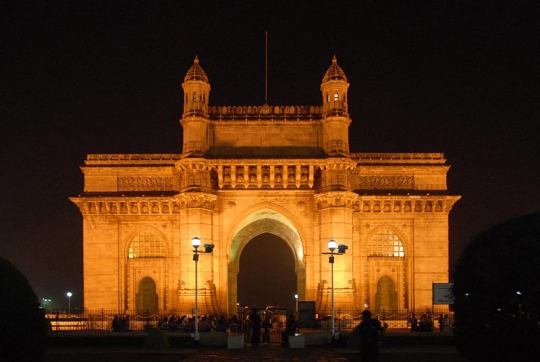
This is probably the most prominent landmark that represents Mumbai almost everywhere. Overlooking the Arabian Sea on one side and the royal Hotel Taj on the other; this yet another architectural marvel in India with considerable historical significance. The arch commemorates the visit of King George V and Queen Mary to India. The sea near the structure is generally occupied by vessels, trawlers, and yatches. When lighted up in the evening, the Gateway of India carries an explicit charm. You can also take up ferries to other islands from here.
2.Explore the caves at Elephanta Island
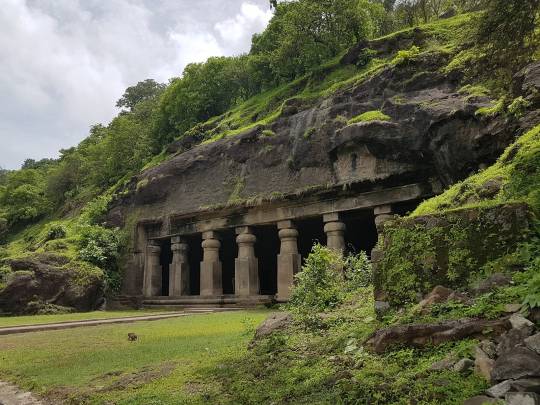
Situated in the Sea of Oman, the Elephanta Island and the island caves are very easily accessible to people in Western India. This place is home to all types of archeological elements and evidence that prove they are belonging to the 2nd Century. There are also various religious artifacts that are known to belong to the 5th and 6th century AD. The 7 meter statue of Lord Shiva is one of the most prominent fixtures here. There are also other structures that give a detailed description of seven other religious figures. It’s a worthwhile experience.
3. Taste the Mumbai special Vada Pav

All Mumbaikars would consider their routine incomplete without Vada Pav. It is one of the most affordable eateries available around to deal with hunger. Sold at every nook and corner of the city, this is indeed an interesting recipe. The basic idea behind this is bread bun stuffed with spiced potatoes and Indian flavored sausages. You’d love eating it.
4. Watch over the murals at Chapel Road
Within the sleepy alleys of old neighborhoods, you may come across several outstanding street arts. These include lifelike images of various Bollywood stars including Amitabh Bachchan, Madhubala, Dilip Kumar, and Rajesh Khanna glorifying the old street walls. There are also several cartoon murals that you would love watching.
5. Capture an elegant sunset at the Marine Drive

Often popular as the ‘Queen’s Necklace’ the Marine Drive is just a 15 minutes cab ride away from the Gateway of India. You can hire a rental car in Mumbai. It is known to be the cleanest and breeziest parts of India. The broad pavement along the driveway and also the broad wall is where many spend their nights sleeping. You may be able to capture some really tranquil views of the Arabian Sea and feel fresh. This is a perfect place to reach in the evening.
6. Catch up with the spiritual vibes at Siddhivinayak Temple
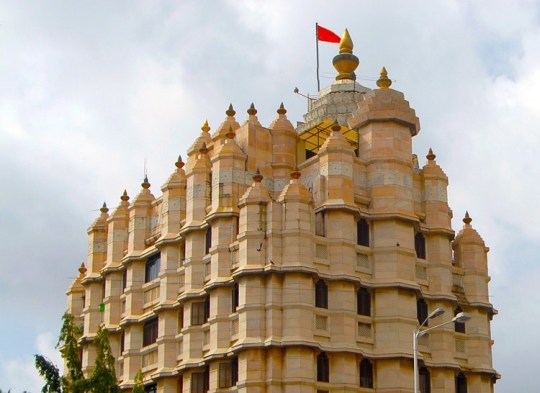
This temple is dedicated to Lord Ganesha, the ruling deity of the city. This temple has had great significance ever since its existence and is visited by the most popular and wealthiest families too. There are thousands of visitors here regularly. However, you may find more crowds on special religious occasions.
7.Castella-de-Aguada
With just a flight of a few stairs and two arches, this is the modest fort you will ever witness in your lifetime. Moreover, what makes it the most special is its location. This is one of the best places to gaze at the excellently laid Bandra Worli Sea Link. Visiting here would be one of the best things to do in Mumbai.
8. Shopping at the Chor Bazar

The Chor Bazar or “Thief Market” became popular for sale of theft goods. Also, this is how it got its name. Window shopping could be done well here even if you’re not into really buying anything. There are also several street food spots that would offer amazing dishes to savor.
9.Animal Spotting at Sanjay Gandhi National Park

Well, this is a national park situated right in the middle of the city with tigers and other wild species roaming and dwelling within its ambiance. The national park also has an entire cluster of ancient Buddhist caves named as the ‘Kanheri Caves’ within its borders. You could have a great day here.
10. Know the Sassoon Docks Fishermen
An early morning visit to Sasoon Docks will let you catch up with some amazing market scenes with fishermen in large numbers returning back with their fresh catch. This is where most of the popular restaurants get their stuff from. It could be a different way of exploring a place, knowing how the city functions regularly.
11. The Royal Opera House
The foundation of the Royal Opera House was known to be laid in the Colonial Era and holds on to several interesting historical events and secrets. There were further renovations and additions made to this building from time to time after 1911. It has been renovated and reopened in the year 2016 with all sorts of explicit entertainment for the Mumbaikars. A visit here would surely be worthwhile.
12.The Bohri Kitchen
If you’re fond of savoring new flavors, this restaurant could never be missed from your list. One among the most renowned and oldest settled restaurants, the Bohri Kitchen is also known to be visited by many prominent celebrities.
13. Iscon Temple
Situated very next to the Juhu Beach, this is one of the most prominent temples in India with a grand, elegant structure. Built over four acres of land this temple had been a considerable spiritual retreat for people.
14. Visit the Haji Ali Dargah

Situated 500 yards offshore in the Arabian Sea the Haji Ali Dargah is the tomb of the Muslim saint Pir Haji Ali Shah Bukhari. This is one of the most elegant and prominent religious places in Mumbai. The intricate Indo-Islamic architecture and glass work at the Dargah is absolutely worthwhile.
15. Colaba Causeway Market
This is one of the best shopping joints to be visited in Mumbai. The market offers with a wide collection of different ladies garments and accessories. Situated near the police headquarters in Southern Mumbai, this market should be visited at least once while you’re in Mumbai.
The list of interesting things to do in Mumbai would hardly come to an end.If you have any travel problem then you can book Tour and Travel in Mumbai. Moreover, the above-mentioned suggestions would surely help you plan some of the worthiest explorations in Mumbai.
1 note
·
View note
Text

Pozývame všetkých na farebné oslavy Krishna Janmashtami (narodeniny Bhagawana Sri Krishnu)
30. augusta od 15:30 vyššie
💞Pripojte sa k rôznym dimenziám Bhagawana, keď je ON pri tejto priaznivej príležitosti intenzívne k dispozícii prostredníctvom najvyššieho pontifa hinduizmu a zažívajte HO prostredníctvom DARSHANU, INIACIE, RITUÁLOV A SATSANGU.
💞 Pripojte sa k Kanhovi, ktorý ukradol srdce svojich oddaných prostredníctvom svojich hravých Leelas, pripojte sa k Makhanskému zboru tým, že mu ponúknete jeho obľúbeného makana/maslo. Hrniec Special Seva of Butter pre Makhan Chor (Ten, kto kradne maslo) len za 108 USD (americký dolár).
22Krishna Ashtottara Shatanamavali 22. verš popisuje Krišnu ako
Om Navanita Nataya Namaha: Ten, kto tancuje pre maslo
💫 Nenechajte si ujsť túto priaznivú ponuku, keď je v tele Avatar. Védska tradícia má niekoľko špeciálne navrhnutých vzorcov na získavanie energie Kundaliní pri svojom zdroji. Rituály, ak sa vykonávajú v prítomnosti Avatara v energetickom poli - Kshetra otvára všetky možné brány k zážitku prosperity, úspechu, zdravia a uzdravenia vo vzťahoch tým, že klepne na energiu Kundaliní pri svojom zdroji.
Adikailash, v Bengaluru, India je kshetra, ktorú vo forme zriadil samotný Paramashiva, SPH vyvolávaním a inštaláciou rôznych bohov a bohyní Shri Kailaasa. Akákoľvek modlitba alebo rituál vykonávaný v nadvedomom energetickom poli (kshetra) tisícnásobne zvyšuje výhody rituálu.
Ďalšie Sevy, ktoré sú k dispozícii oddaným, sú:
💞Andholana Seva (Jhula Seva): 501 USD
Ponúknutím tohto švihu sa vzdávame svojej mysle a ponúkame vďačnosť tam, kde oslavujeme najvyššieho pontifa hinduizmu ktorý sa kolíše v našom vnútornom priestore znova a znova.
💞Churanabhishekam: 1008 USD
Nektár Krišnovej formy a príbehu je oslavovaný 25+ ponukami ovocných štiav ponúkaných deiti Sri Krishnu.
⭐Pridajte sa na sledovanie https://www.youtube.com/LifeBlissFoundation
Rezervácia sevas (obiet) pre Bhagawana Krishnu:
🍀 Krok 1, platobný link https://gateway.nithyanandeshwarahindutemple.org/nhtla/product/krishna-bhava-samadhi-darshan-donations-2021-aug/
🍀 Krok 2 Vaša sankalpha, vedomý zámer
http://tiny.cc/sankalpa2021
0 notes
Text
Tian In Gaew Riak Jidt (In KooYintong) Candle magic Love spell for enchantment

Candle magic spell Tian In Gaew Riak Jidt (In Koo/Yintong) Love spell for enchantment
Looking for a new relationship? Want to deepen the bond with your current partner? Love & Attraction candle magic is the perfect solution for forming new romances or intensifying the intimacy of your current relationship.
Candle magic is a very old and powerful form of sympathetic magic, but it is also one of the simplest types of magic to use for casting spells. Candle magic can be simple or complicated, just as relationships can.
It is candle magic spell which you can cast over man or women ,Candle love spell that work fast is a spell that leaves powerful influence over mind of your lover which will b similar to hypnosis effect like symptoms and lover become in control. If you want something like love spell to control lover or someone. It works in natural way without showing any sign or symptoms of candle love spell that work instant. If you want to get love from someone or want to make someone in favor so this working candle love spell is very good for your purpose
The Powerful Candle Magic Love Spells is targeted to those who have just lost their partner and love ones. This spell works perfectly to call back an ex lover whom just left you or stopped loving you.

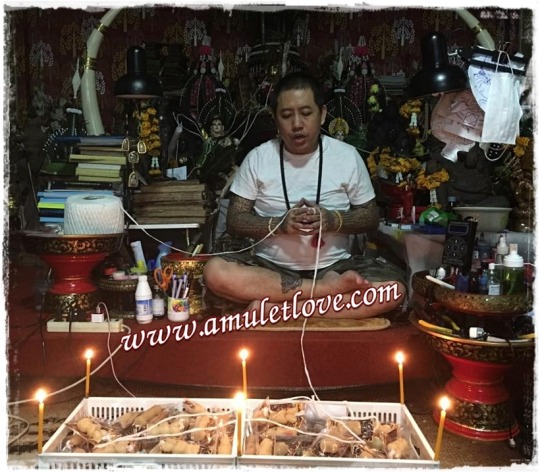


Holy Materials : Candle magic spell Tian In Gaew Riak Jidt (In Koo/Yintong) Love spell for enchantment
Made By Ajarn Kong Sak
He has created these candel spells using both the Astrologers' 'Dtamra Horasat', and the Sorceror's 'Dtamra Saiyasart', in combination to apply both astrological iinfluences, as well as the Sorcery of Maha Sanaeh and Mad Jidt Mad Jai Enchantment Spell for Amorous Dominion over the hearts of others.
Ajarn Kong Sak has made the candle effigies from the authentic traditional formula of Muan Sarn Ingredients, adhering to the concept that the wax must be natural beeswax, that comes from wild forest bees.
The wax had to be boiled in the cauldron at a specifically allocated time according to the Astrological alignments to maximise and focus the influence of the stars and planets and the elemental forces into the Sacred Muan Sarn.
A series of essential Sorcerous substances must also be included in the recipe for the potion, including powdered gold leaf taken from Buddha Statues that have been covered with gold leaf pasted on by the faithful devotees, and Sacred Buddhist relics, Ancient Perfumed oils such as Nam Man Jan, Necromantic , Sacred Herbal Maha Sanaeh Oils, Nam Man Phii Prai, Wan Grajae Jan, Wan Sanaeh Jantr (all seven kinds, each kind representing one of the colors of the rainbow), Wan Din Sor Lersi (Lersi Hermits Chalkpen herb), Wan Chang Pasom Khloeng (Mating elephant in heat herb)Wan Sau Hlong, Wan Taep Ramjuan, Wan Chor Tong, Wan Maha Sanaeh and most importantly, the extremely rare Paya Wan Gai Daeng (red cockerel herb), from Burma.

The Lover Come Back to Me!
Candle amulet is a must for anyone who seeks the return of a lost love or hopes to renew the spark in a current relationship. Carry this remarkable amulet with you if you wish to "reconnect" with someone who has been distant from you. Hold it tightly if you want them to think of you, miss you,
Whether you have a current love who is ignoring you, or you are searching for a new love, Candle Magic Love Spells bridges the empowered for high levels of attraction and fascination powers will fall in love with you .and will bring love and happiness between lovers, and will prevent the breaking up of your love and your family relation.
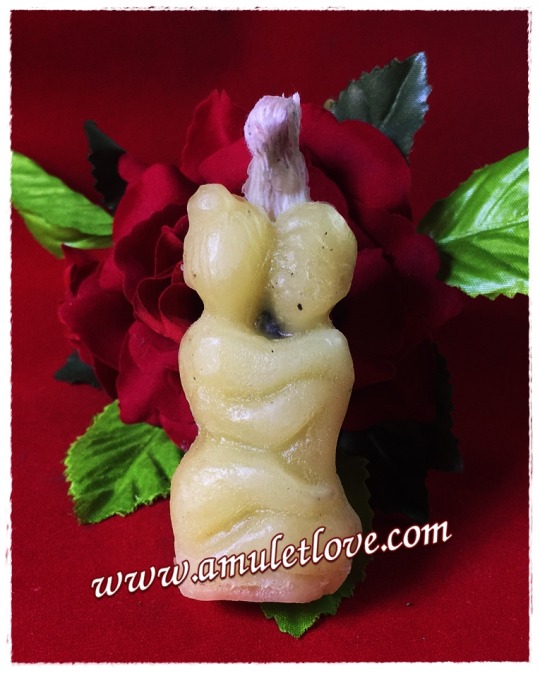
What is In Koo ?
The In Koo amulet (symbol of love and lust)
A figurine showing a couple in Siamese embrace that is meant for lovers or married couples, or for making one more attractive to the opposite sex;
For those who are faced with struggles and problems in their love-lives and romantic situations, this In Koo of occult knowledge will enable you to enhance this area of your life for the better, powerful control people's mind and can make a worshiper sexually attractive.
The In Koo (also known in South East Asia as ‘Yin Tong') is a symbiotic Deity in the form of a Man and a Woman embracing each other.(male and female) in the history of the world, It is a magical animist effigy which ancient people believed represents the first ever pair of Man and Woman and is a symbol of Love
The In Koo is a sacred Love symbolizes love, bonding, strong relationship and loyalty in love and Metta Maha Sanaeh Talisman which has been used by ancient folk for thousands of years, and shows no sign of disappearing soon, for its popularity as a love charm is still as evident as it ever was. In Koo charms amulets are popular in Thailand for those who are seeking a love partner or simply to make their partner be faithful and "tied" to the wearer.
The Magical Properties kept the In Koo in the house, then all the family and people in the household will love each other and be happy together. If it is worn as a love charm or carried on ones person, then it will cause everyone the wearer meets to feel friendly and compassionate towards them, and even make others fall in love with the wearer


How to use Tian In Gaew Riak Jidt (In Koo/Yintong) Candle magic Love spell for enchantment
Is used to purify a relationship, which is either to stop arguments between lovers or to strengthen a relationship.
Once you have chosen your candle you are finally ready to cast the spell and hopefully reunite with your special someone.
1)Prepare yourself for the spell by clearing your area and your mind. before the full moon appears.find a quiet place.needs a private area with no disturbance of any kind.
2) write your name and your lover name, date of birth (if you know it) in to your photos and your lover photos. Or in a cloth/ in of clothing your lover wears, and even better, if possible, some hair or pieces of fingernails of the person,
3) Put in the hole under the candle Relax and hold the candle while visualizing the desired outcome as you send your energy from your hands into the candle ,Place the candle in a candle holder on your altar or tabletop
4) Light the candle and continue to visualize the outcome as you think about the results you desire. Focus all your energy on the results as you watch the candle burn for a period of time / Focus on the candle as it burns, visualizing the person coming to you with love. Imagine the face of the person whom you want back in your life while staring at the candle ,Allow your candle to burn out or extinguish it safely.
Perform the spell on the same day of the week in which the person you wish to enchant was born on, and if you know what time they were born on, then do it at that same time of the day, for the most powerful magic.
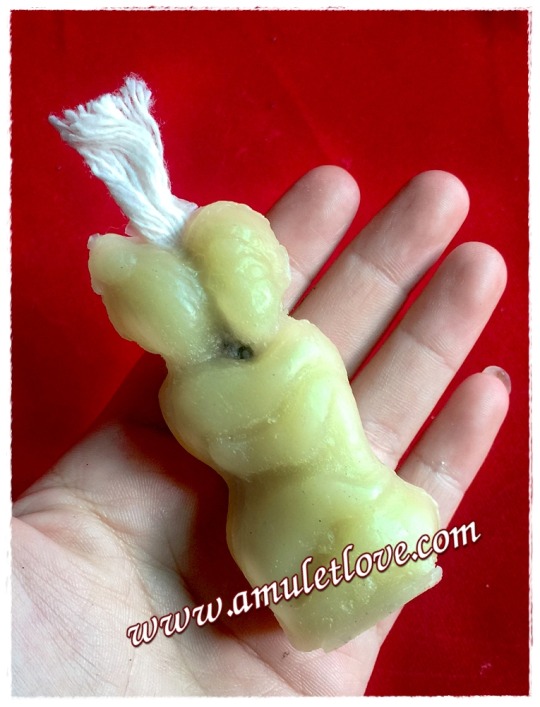
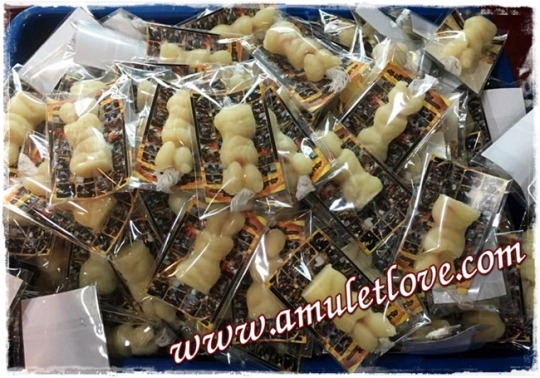
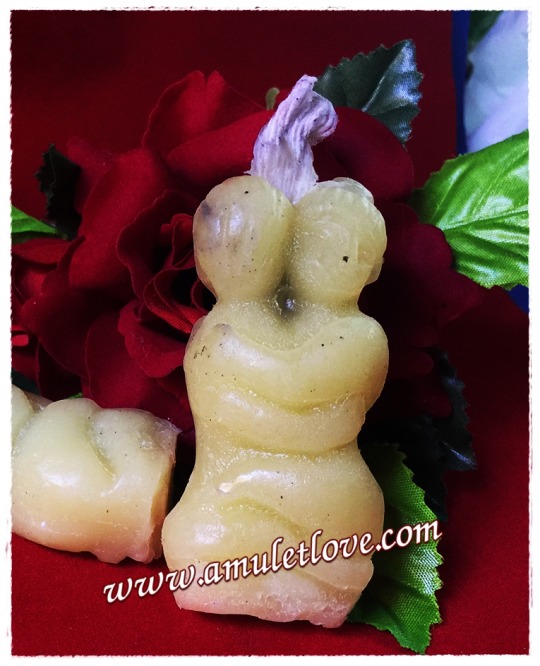




Candle magic Tian In Gaew Riak Jidt Love spell for enchantment $64 Free shipping

Note :……………………………
Guarantee you the most powerful amulet you can get, using only the finest tools and most sacred forms of magick that has been used for centuries with extraordinary results.
> All items will come with an Item Instruction Paper.
> An Items may vary in size, colour and appearance from the image shown; however its purpose will remain the same as that described above.
> The information given for this item is not intended as diagnosis, treatment or prescription for any disease, nor is it presented as an alternative to regular medical attention. If you are in need of medical attention please contact a health professional. Some information we supply is obtained from historical sources, own experiences or represent opinions of a published author.
Payment Method: ACCEPT PAYPAL or Western Union.. ONLY!!
Free Shipping:Worldwide...............
The product would be carefully packed, The package would be delivered from Bangkok Thailand through Registered Air Mail Via Thailand Post Co.,Ltd. Please allow 14 - 17 Business Days for shipment arrival. Package would be delivered within 2 business days upon the receipt of Payment.
Thank you very much & Good Luck and Happy and Enjoy Shopping
Read the full article
#AjarnKongSak#AjarnNankong#Amulet#Candle#Candlemagicspell#Enchantment#InKoo#InKooRiakJidt#InKoo/Yintong#lovespell#Lovespellforenchantment#magicspell#TianInGaew#TianInKoo
0 notes